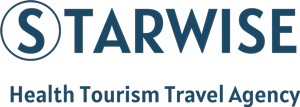Rhinoplasty, or “nose job,” is one of the most common cosmetic procedures sought globally. For patients traveling from abroad, Istanbul has emerged as a premier destination. It offers a unique blend of world-class surgical expertise, competitive pricing, and a supportive environment for recovery. Successfully navigating this journey requires careful planning and a clear understanding of the surgical process. Additionally, dedicated adherence to the post-operative recovery protocol is crucial, especially for those returning home shortly after the operation.
The Istanbul Advantage: Blending Care and Culture
Istanbul’s appeal for rhinoplasty patients is multifaceted. The city hosts numerous JCI (Joint Commission International) accredited hospitals and specialized clinics, signifying adherence to global quality standards. Surgeons are often internationally trained, ensuring sophisticated surgical techniques that prioritize both aesthetic harmony and functional breathing.
Crucially, clinics cater specifically to the international patient. They frequently offer all-inclusive packages. These typically cover the operation, pre- and post-operative consultations, airport transfers, and several nights of accommodations in specialized hotels or recovery centers. This streamlined approach minimizes logistical stress. It allows the patient to focus entirely on their health and recovery. For many, the ability to recover in a vibrant city, perhaps enjoying light sightseeing, adds an appealing dimension to the medical journey.
The Immediate Post-Operative Phase (Week 1)
The first week is the most critical and intense period of recovery. It necessitates the patient’s mandatory stay in Istanbul. The surgery itself typically takes two to three hours, and most patients go home the same day or after one night of observation in the hospital.
Key features of this period include:
- Swelling and Bruising: This is the most visible side effect. Swelling is most pronounced during the first 48 hours and is typically accompanied by bruising around the eyes.
- Sensation and Discomfort: Patients will have external splints and potentially internal splints or silicone tampons in place. This often causes nasal congestion, making breathing difficult. Pain is generally mild and controllable with prescribed oral pain relievers.
- Essential Care: To manage swelling and expedite healing, patients must keep their head elevated (using two pillows while sleeping) and apply cold compresses diligently for the first 48 hours. Low-salt diets and avoiding hot showers or hot liquids are vital to minimize swelling.
By the fifth to the seventh day, the patient returns to the clinic for the removal of the external splint, casts, and internal tampons. This is a significant milestone. It marks the end of the most restrictive phase.
Mid-Term Recovery and Return to Normalcy (Weeks 2-6)
Once the cast is removed, the nose will reveal its basic shape, although it will still be noticeably swollen. International patients usually feel confident enough to fly back home around the 7th to 10th day after this critical check-up.
Upon returning to their home country, patients must rigorously continue the care regimen:
- Protect the Nose: The nose is extremely vulnerable to injury. Patients must strictly avoid contact sports for at least 6 weeks.
- Avoid Glasses: Pressure from eyeglasses can negatively impact the healing bone and cartilage structure. Surgeons typically advise against wearing them for two to three months.
- Sun Protection: You must avoid direct sun exposure, as UV rays can increase swelling and cause permanent discoloration or spotting on your sensitive nasal skin.
- High-SPF sunscreen and wide-brimmed hats are mandatory.
- Lifestyle: Smoking and alcohol consumption must be halted. They severely impede the healing process and increase the risk of complications. Light exercise, such as walking, typically resumes after two weeks. However, heavy weightlifting and strenuous activities are restricted for 4 to 6 weeks.
Long-Term Follow-up for Overseas Patients
While the majority of social swelling subsides within the first month, the final result of the rhinoplasty is a process that can take 6 to 12 months. Sometimes it even takes up to two years for those with thick skin. The nose gradually refines its shape as residual deep swelling diminishes.

For the international patient, follow-up relies heavily on telemedicine and communication. Istanbul clinics provide clear communication channels. They often schedule virtual follow-up appointments at the 3rd, 6th, and 12th-month marks. This enables the surgeon to monitor progress, assess the need for post-operative massage, and address any concerns. It does so without requiring the patient to travel back prematurely.
In conclusion, a rhinoplasty trip to Istanbul is a journey that demands patient commitment to the rigorous recovery protocol. The city provides an ideal infrastructure for surgery and immediate healing. However, the ultimate success of the transformation rests on the patient’s diligence in protecting their new nose. They must adhere to the doctor’s instructions long after they have departed the shores of the Bosphorus.


